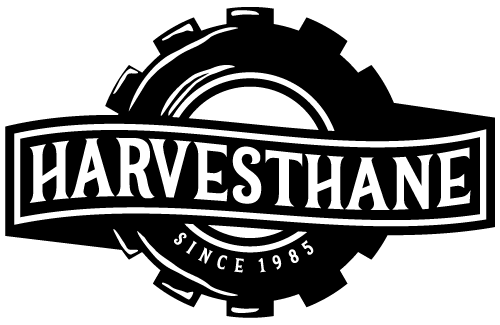NATURAL RUBBER (NR) Natural Polyisoprene
Advantages: Outstanding resilience; high tensile strength; superior resistance to tear and abrasion; excellent rebound elasticity; good flexibility at low temperatures; excellent adhesion to fabric and metals
Limitations: Poor resistance to heat, ozone, and sunlight; very little resistance to oil, gasoline, and hydrocarbon solvents
Comment: Natural rubber is a low-cost material with excellent physical properties. It is ideal for applications that require good resistance to abrasion, gouging, and cut growth. Natural rubber is tough and long-wearing, and it can be compounded for service at temperatures as low as -65°F.
Styrene Butadiene (SBR, Buna-S)
Advantages: Excellent impact strength; very good resilience, tensile strength, abrasion resistance, and flexibility at low temperatures
Limitations: Poor resistance to ozone and sunlight; very little resistance to oil, gasoline, and hydrocarbon solvents
Comment: SBR is much like natural rubber in most of its properties. It is the lowest-cost and highest-volume elastomer available. Although its physical properties are marginally poorer than those of natural rubber, SBR is tougher and slightly more resistant to heat and flex cracking. It can be readily substituted for natural rubber in many applications with cost savings.
BUTYL (IIR) Isobutylene-isoprene
Advantages: Outstanding impermeability to gases and vapors; very good resistance to heat, oxygen, ozone, and sunlight; high energy absorption (damping); excellent resistance to alkalis and oxygenated solvents; good hot tear strength; superior resistance to water and steam
Limitations: High compression set; poor resistance to oil, gasoline, and hydrocarbon solvents; low rebound elasticity (snap); fair processability; poor resilience
Comment: Butyl is chemically unlike natural rubber or other synthetic elastomers in that it is inherently resistant to ozone and corrosive chemicals, including some mineral acids, ketones, and phosphate ester-type hydraulic fluids. On the negative side, its creep, cold flow, and compression set characteristics leave much to be desired. The processing properties of butyl are only fair. Due to its low level of unsaturation, buytl is difficult to break down during mixing, and it is very susceptible to contamination—and even slight contamination causes improper cure and poor physical properties. Chlorinated and brominated versions are less susceptible to contamination and offer both lower compression set and improved heat resistance.
EPDM ethylene-propylene, ethylene-propylene-diene
Advantages: Excellent resistance to heat, ozone, and sunlight; very good flexibility at low temperatures; good resistance to alkalis, acids, and oxygenated solvents; superior resistance to water and steam; excellent color stability
Limitations: Poor resistance to oil, gasoline, and hydrocarbon solvents; poor adhesion to fabrics and metals
Comment: Because of its unique combination of physical properties, EPDM can be used in an unusually broad range of products. Aside from applications requiring resistance to oil and hydrocarbon solvents, there is scarcely an application in which EPDM is totally unsuitable. Due to its excellent resistance to ozone, sunlight, and severe weather conditions, EPDM is ideal for outdoor service. In general, EPDM is similar to butyl but has slightly less susceptibility to contamination.
NEOPRENE™ (CR) Polychloroprene
Advantages: Good inherent flame resistance; moderate resistance to oil and gasoline; excellent adhesion to fabrics and metals; very good resistance to weather, ozone, and natural aging; decent resistance to abrasion and flex cracking; very good resistance to alkalis and acids
Limitations: Poor to fair resistance to aromatic and oxygenated solvents; limited flexibility at low temperatures
Comment: Neoprene™ is an excellent all-purpose elastomer with a nearly ideal balance of properties and few practical limitations. General purpose neoprenes are classified into two groups: a sulfur-modified type and a mercaptan-modified type. Sulfur-modified neoprene has increased tear strength and resilience, and mercaptan-modified neoprene is superior in resistance to heat and compression set.
NITRILE (NBR, Buna-N) Acrylonitrile-butadiene
Advantages: Very good resistance to oil and gasoline; superior resistance to petroleum-based hydraulic fluids; wide range of service temperatures (-40° to 250°F); good resistance to hydrocarbon solvents; very good resistance to alkalis and acids
Limitations: Inferior resistance to ozone, sunlight, and natural aging; poor resistance to oxygenated solvents
Comment: Nitrile and Neoprene™ are the highest-volume oil-resistant elastomers. Nitrile is superior to Neoprene™ in resistance to oil, gasoline, and aromatic solvents. Yet it does not perform as well as Neoprene™ in applications requiring exposure to weather, ozone, and sunlight. Furthermore, it has no inherent flame resistance.
The properties of nitrile vary considerably with the ratio of acrylonitrile and butadiene. In general, as the acrylonitrile content of the elastomer increases, improvements are seen in its oil and solvent resistance, as well as in its abrasion resistance. When the acrylonitrile content decreases, these properties deteriorate—but low-temperature flexibility and resilience improve.
When nitrile is modified by polyvinyl chloride (PVC) resins, its resistance to weather, ozone, and sunlight improves considerably, without significant sacrifice in oil-resisting properties. PVC-modified nitrile is similar to neoprene, in general; however, it is much inferior to neoprene in its adhesion to fabrics and metals.
Carboxylated nitrile is usually tougher and more resistant to tear and abrasion than conventional nitrile, but it is less resilient and flexible at low temperatures.
URETHANE (AU, EU) Polyurethane diisocyanate
Advantages: Outstanding resistance to abrasion and tear; very high tensile strength with good elongation; excellent resistance to weather, ozone, and sunlight; good resistance to oil and gasoline; excellent adhesion to fabrics and metals
Limitations: Poor resistance to alkalis, acids, and oxygenated solvents; inferior resistance to hot water
Comment: Urethane is notable for its combination of hardness with elasticity, and its outstanding abrasion resistance and tear strength. It may be either ether- or ester-based. The ester-based polymer is superior in resistance to abrasion and heat, while the ether-based polymer has better flexibility at low temperatures.
Urethanes are sold in liquid or dry form, and a casting process is usually used for viscous liquid form. Conventional rubber equipment is used for processing urethane in millable gum form. The dry type has physical properties slightly inferior to those of the liquid type. Urethane is a relatively expensive elastomer whose use is usually limited to applications that require a combination of its outstanding properties, such as toughness, tear strength, and abrasion resistance.
SILICONE (VMQ) Polysiloxane
Advantages: Outstanding resistance to high heat; superb flexibility at low temperatures; low compression set; very good electrical insulation; excellent resistance to weather, ozone, sunlight, and oxidation; superior color stability
Limitations: Poor resistance to abrasion, tear, and cut growth; low tensile strength; inferior resistance to oil, gasoline, and solvents; poor resistance to alkalis and acids
Comment: The most outstanding feature of silicone is its ability to retain rubbery properties through extremes in temperature. It is the most heat-resisting elastomer in the market today and the most flexible at low temperatures. Service temperatures range from -150° to 500°F. Silicone generally does not have high tensile strength, but much of the strength it does have can be retained at very high temperatures. Because silicone is relatively expensive, it is not normally used unless extreme temperature resistance is essential.
ACRYLIC (ACM) Polyacrylate
Advantages: Outstanding resistance to heat and hot oil; excellent resistance to weather, ozone, sunlight, and oxidation; very good resistance to gasoline and oil, especially those that contain sulfur
Limitations: Poor resistance to alcohols, alkalis, solvents, and aromatic solvents; limited flexibility at low temperatures; inferior resistance to water and steam; slow vulcanization rate
Comment: Heat resistance of acrylic is superior to that of any other elastomer except silicone and fluorocarbon. It performs well in both hot air and hot oil for extended periods, without significant loss of physical properties. Acrylic has moderate resistance to cut growth and flex cracking. Use of acrylic is limited by its inferior flexibility at low temperatures, its poor processing properties, and its slow vulcanization rate. A post cure is necessary to obtain the best characteristics. Low temperature service of acrylic is possible to only about -20°F. However, some types of acrylic that have improved low-temperature flexibility—at the expense of tensile strength and oil resistance—are available.
FLUOROCARBON (FKM) Fluorinated hydrocarbon
Advantages: Outstanding resistance to high heat; excellent resistance to oil, gasoline, hydraulic fluids, and hydrocarbon solvents; good flame retardance; very good impermeability to gases and vapors; very good resistance to weather, oxygen, ozone, and sunlight
Limitations: Poor resistance to tear and cut growth; very little resistance to oxygenated solvents; fair adhesion to fabrics and metals
Comment: Fluorocarbon is a very expensive elastomer with outstanding resistance to a wide variety of oils, fuels, acids, and solvents at elevated temperatures. Its heat resistance is almost as good as that of silicone, and its resistance to hot oil exceeds that of acrylic. Additionally, fluorocarbon’s weathering properties are superior to those of Neoprene™. Because of its very high price, fluorocarbon is used only in applications requiring excellent stability under extremely severe operating conditions. Subjecting fluorocarbon to a two-stage cure cycle produces the best balance of properties.
EPICHLOROHYDRIN (ECO, CO)
Advantages: Excellent resistance to oil and gasoline; superior impermeability to gases and vapor; very good resistance to weather, ozone, sunlight, and oxidation; wide range of service temperatures; good resistance to petroleum-based fluids and solvents
Limitations: Inferior resistance to oxygenated solvents; poor resistance to steam and acids
Comment: Epichlorohydrin is a specialty polyether elastomer that possesses a combination of many desirable properties of nitrile and Neoprene™. On the negative side, its adhesion to fabrics and metals is much inferior to that of neoprene. Also, its superior impermeability to gasses often causes processing problems and product defects, due to air entrapment.
Epichlorohydrin is available as a homopolymer (CO) and a copolymer (ECO) of epichlorohydrin, containing about 50 percent ethylene oxide. The homopolymer is superior in ozone resistance and gas impermeability, but the copolymer is better in resilience and flexibility at low temperatures. Oil resistance of the homopolymer and the copolymer is about the same.
Epichlorohydrin is now also available as a terpolymer of epichlorohydrin, ethylene oxide, and a third monomer. The new terpolymer has properties similar to those of the copolymer. However, unlike the copolymer, the terpolymer can easily be blended with SBR and nitrile, and can also be sulfur-cured. Plus, the terpolymer’s adhesion to fabrics and metals is reportedly the best among the three versions of the epichlorohydrin elastomer.
Access more articles in our Rubber Knowledge Center.



